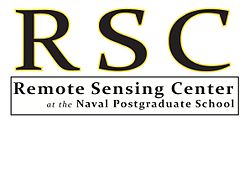Remote Sensing Center
 |
|
| Type | Graduate school |
|---|---|
| Established | September 2006 |
| Location | Monterey, California, USA |
| Website | [1] |
The Remote Sensing Center (RSC) at the Naval Postgraduate School was established to bring together a range of capabilities and expertise to address problems of military and intelligence importance, as well as environmental and civil concerns. It is specialized in a variety of remote sensing technologies designed to enable people to look beyond the range of human vision in range or in spectral perception.
Members of the RSC come from the physics, electrical and computer engineering, computer science, meteorology, and oceanography departments. They are collaborating to develop new remote sensing systems, as well as use and exploit current systems in air and space. It is part of a larger activity in the Monterey Bay area that provides expertise in topical areas outside the technical disciplines available at NPS.
The Naval Postgraduate School, and specifically the Remote Sensing Center, has the ability to handle classified data, as well as access to a Sensitive Compartmented Information Facility (SCIF) that is fully equipped with comms, storage, and processing capabilities. The RSC has pre-established cooperative research with government, academia, and industry in the remote sensing sector ranging from local to international partners. Highly experienced military officers, intelligence analysts, and faculty are a critical part of the NPS research staff.
Lidar (LIght raDAR) works as an optical analog to radar in the visible spectrum of light with advantages related to the smaller wavelengths of the laser pulse. Lidar ranges in wavelength from ultra-violet (0.3-0.45 µm) to visible (0.45-0.70 µm) to the infrared (1-15 µm). Lidar can detect much smaller particles than radar in the atmosphere (which cannot detect things smaller than cloud particles), and thus can be used for aerosol detection.
The raw form of data is a set of x,y,z coordinate points. With recent advances, resolution has improved dramatically. Raw data can be processed to remove unwanted areas or features. Outputs such as topographic maps with contour lines can also be derived from lidar. Programs to manipulate lidar data include ENVI, ERDAS IMAGINE, ArcInfo, and ESRI ArcView (with 3D analyst ext.) One useful derivation of lidar data is the DEM (Digital Elevation Model). DEMs are displayed in a raster format with a matrix. The DEM has a specified cell size that corresponds to the earth’s surfaces. The cell contains the average elevation of the points within it.
...
Wikipedia
